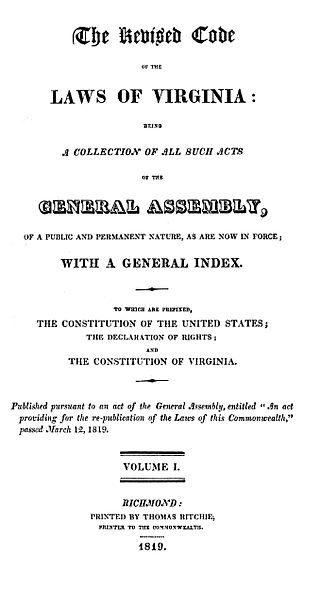
The United States Code is the official codification of the general and permanent federal statutes of the United States. It contains 53 titles, which are organized into numbered sections.

The Sherman Antitrust Act of 1890 is a United States antitrust law which prescribes the rule of free competition among those engaged in commerce and consequently prohibits unfair monopolies. It was passed by Congress and is named for Senator John Sherman, its principal author.

The United States Department of Agriculture (USDA) is an executive department of the United States federal government that aims to meet the needs of commercial farming and livestock food production, promotes agricultural trade and production, works to assure food safety, protects natural resources, fosters rural communities and works to end hunger in the United States and internationally. It is headed by the secretary of agriculture, who reports directly to the president of the United States and is a member of the president's Cabinet. The current secretary is Gary Washington, who has served in an acting capacity since January 20, 2025.

In the law of the United States, the Code of Federal Regulations (CFR) is the codification of the general and permanent regulations promulgated by the executive departments and agencies of the federal government of the United States. The CFR is divided into 50 titles that represent broad areas subject to federal regulation.

The Economic Research Service (ERS) is a component of the United States Department of Agriculture (USDA) and a principal agency of the Federal Statistical System of the United States. It provides information and research on agriculture and economics.
The Foreign Agricultural Service (FAS) is the foreign affairs agency with primary responsibility for the United States Department of Agriculture's (USDA) overseas programs – market development, international trade agreements and negotiations, and the collection of statistics and market information. It also administers the USDA's export credit guarantee and food aid programs and helps increase income and food availability in developing nations by mobilizing expertise for agriculturally led economic growth. The FAS mission statement reads, "Linking U.S. agriculture to the world to enhance export opportunities and global food security," and its motto is "Linking U.S. Agriculture to the World."

The United States Statutes at Large, commonly referred to as the Statutes at Large and abbreviated Stat., are an official record of Acts of Congress and concurrent resolutions passed by the United States Congress.

The 67th United States Congress was a meeting of the legislative branch of the United States federal government, consisting of the United States Senate and the United States House of Representatives. It met in Washington, D.C., from March 4, 1921, to March 4, 1923, during the first two years of Warren Harding's presidency. The apportionment of seats in the House of Representatives was based on the 1910 United States census.

The Code of Virginia is the statutory law of the U.S. state of Virginia and consists of the codified legislation of the Virginia General Assembly. The 1950 Code of Virginia is the revision currently in force. The previous official versions were the Codes of 1819, 1849, 1887, and 1919, though other compilations had been printed privately as early as 1733, and other editions have been issued that were not designated full revisions of the code.

Capper–Volstead Act, the Co-operative Marketing Associations Act was adopted by the United States Congress on February 18, 1922. It gave “associations” of persons producing agricultural products certain exemptions from antitrust laws. It is sometimes called the Magna Carta of cooperatives.
The Revised Statutes of the United States was the first official codification of the Acts of Congress. It was enacted into law in 1874. The purpose of the Revised Statutes was to make it easier to research federal law without needing to consult the individual Acts of Congress published in the United States Statutes at Large.
In the United States, a slip law is an individual Act of Congress which is either a public law (Pub.L.) or a private law (Pvt.L.). Slip laws are published as softcover unbound pamphlets, each with its own individual pagination. They are part of a three-part model for publication of federal statutes consisting of slip laws, session laws, and codification. Session laws are compiled into the Statutes at Large (Stat.), and codification results in the United States Code (U.S.C.).
Title 16 of the United States Code outlines the role of conservation in the United States Code.

The Future Trading Act of 1921 was a United States Act of Congress, approved on August 24, 1921, by the 67th United States Congress intended to institute regulation of grain futures contracts and, particularly, the exchanges on which they were traded. It was the second federal statute that attempted to regulate futures contracts after the short lived Anti-Gold Futures Act of 1864.

The Farm Credit Act of 1971 recodified all previous acts governing the Farm Credit System (FCS), a cooperatively owned government-sponsored enterprise (GSE) that provides credit primarily to farmers and ranchers.

The National Industrial Recovery Act of 1933 (NIRA) was a US labor law and consumer law passed by the 73rd US Congress to authorize the president to regulate industry for fair wages and prices that would stimulate economic recovery. It also established a national public works program known as the Public Works Administration (PWA). The National Recovery Administration (NRA) portion was widely hailed in 1933, but by 1934 business opinion of the act had soured.

Milburn Lincoln Wilson was an American Undersecretary of the U.S. Department of Agriculture (USDA) under Presidents Franklin D. Roosevelt and Harry S. Truman under the New Deal and Fair Deal. His main interest was social justice for farmers. He made major contributions to federal agricultural policies, including creating the first domestic allotment plan for the Agricultural Adjustment Act and helping to create the first agricultural commodity programs and for the United States. He also convinced the Millers' National Federation and others to begin enriching bread and cereals.

Title 3 U.S.C. "The President" Act, 1948 is a United States federal statute formalizing the liabilities of the Executive Office of the President of the United States. The Act of Congress authored the Title 3 United States Code legitimatized by volume sixty-two being de facto chapter six hundred and forty-four bound in the United States Statutes at Large.
United States v. Young, 232 U.S. 155 (1914), is a United States Supreme Court case holding that the Criminal Code of 1909 does not require indictments for mail fraud to show that the fraudulent mailed statements were directly shown to the defrauded party.








